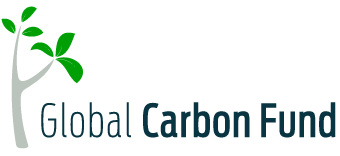BP Halts Indiana Carbon Capture Project Amid Safety and Economic Concerns
BP has indefinitely paused its carbon capture and storage (CCS) project in Indiana. The plan, aimed at making the state a hub for low-carbon hydrogen, faced strong local opposition. Public safety fears and economic uncertainties have slowed progress. This pause could delay clean energy investments and climate goals across the Midwest.
Why BP Shelved Its Indiana CCS and Blue Hydrogen Plan
BP intended to capture carbon dioxide emissions from its Whiting Refinery and store them underground. This process was crucial for producing blue hydrogen, a cleaner fuel created using fossil fuels paired with carbon capture. This effort was part of its involvement with the Midwest Alliance for Clean Hydrogen (MachH2), with the goal of building a regional hydrogen hub.
But the project hit a wall due to intense local resistance. BP cited several reasons for the pause: economic uncertainty, a slow hydrogen market in the Midwest, a lack of long-term federal support, and one of its main roadblocks—finding a safe site to store the captured carbon
Residents raised concerns about underground CO₂ leaks, water contamination, and long-term environmental risks. Past pipeline accidents in the region heightened these fears. Compounding the issue, Indiana laws allow potential liability to fall on taxpayers if storage sites fail, making investors nervous. As a result, BP shifted focus to its global low-carbon portfolio.
Local Resistance Derails BP’s Low-Carbon Push
Community opposition played a key role in BP’s decision. People living near the proposed storage site feared pipeline ruptures and threats to water, agriculture, and seismic safety. Many voiced a broader distrust of CCS projects, especially when developers fail to fully explain safety protocols.
Environmental justice advocates also challenged why high-risk industrial projects are often sited near low-income or rural communities. Without early and honest engagement, clean energy efforts are likely to stall, even when backed by solid science and funding.
Environmental Setbacks for Indiana and the Midwest Hydrogen Hub
The project would have captured millions of tons of carbon dioxide annually, helping the Whiting Refinery shrink its carbon footprint. This would have positioned Indiana as a key player in the $1 billion U.S. Department of Energy’s Midwest Hydrogen Hub.
However, with the project on pause, those emission reductions—and Indiana’s clean energy leadership—are on hold. The delay puts federal hydrogen funding at risk and could weaken confidence in regional CCS and hydrogen initiatives.
Future of BP’s Hydrogen Strategy Remains Unclear
BP believes hydrogen can play a crucial role in achieving a net-zero energy system. When used as a fuel, it reacts with oxygen to produce only water, without releasing any carbon dioxide.
If its production is fully decarbonized, hydrogen becomes an ideal energy solution for hard-to-abate sectors such as iron, steel, and chemical industries. It is also well-suited for heavy transport modes like trucks, ships, and aircraft, which require compact, high-energy fuels.

Even if BP remains committed to global low-carbon projects, Indiana’s setback casts doubt on how quickly blue hydrogen can scale in the U.S. The Whiting Refinery will now continue emitting CO₂ without a capture system, weakening the region’s contribution to federal hydrogen goals.
Going forward, federal agencies may tighten requirements around community engagement before funding new CCS or hydrogen infrastructure. Companies, too, may need to prioritize public education and transparency to gain local approval.
- READ MORE: The “Northern Lights” Shines: Shell, Equinor, and TotalEnergies JV Powers the Norway CCS Project
Is Carbon Capture Still a Viable Climate Solution?
BP’s project pause reveals how community pushback can disrupt billion-dollar energy plans. The U.S. government under Biden committed billions to boost hydrogen production and carbon storage. But without local support, these projects struggle to get off the ground.
States like Texas and Louisiana are advancing more smoothly because of clear legal frameworks and stronger public outreach. They may become CCS leaders while regions with legal uncertainty and public skepticism fall behind. Investors are also wary of sudden shifts in strategy, adding to market instability.
Despite setbacks, the carbon capture and storage market is projected to grow.
- According to DNV’s 2025 Energy Transition Outlook: CCS to 2050 report, cumulative global investment in CCS could reach $80 billion over the next five years, or by 2030. This represents 270 million tons of carbon dioxide captured (MtCO2) each year.
 Wood Mackenzie estimates the U.S. CCUS (carbon capture, utilization, and storage) sector could offer a $196 billion investment opportunity over the next 10 years. This is especially true for the oil, gas, chemical, and power industries.
Wood Mackenzie estimates the U.S. CCUS (carbon capture, utilization, and storage) sector could offer a $196 billion investment opportunity over the next 10 years. This is especially true for the oil, gas, chemical, and power industries.

But Indiana’s experience is a cautionary tale. Legal uncertainties and weak community trust can stop even well-funded, scientifically sound projects. Meanwhile, the blue hydrogen market faces growing competition from green hydrogen, which doesn’t rely on fossil fuels or underground storage.
The pause of BP’s Indiana carbon capture project underscores a critical reality—technical innovation and funding aren’t enough. For carbon capture and hydrogen projects to succeed, companies must build community trust, ensure safety, and operate within clear legal boundaries. Until then, the clean energy transition will remain vulnerable to delays, just when the fight against climate change demands urgency.
The post BP Halts Indiana Carbon Capture Project Amid Safety and Economic Concerns appeared first on Carbon Credits.
























